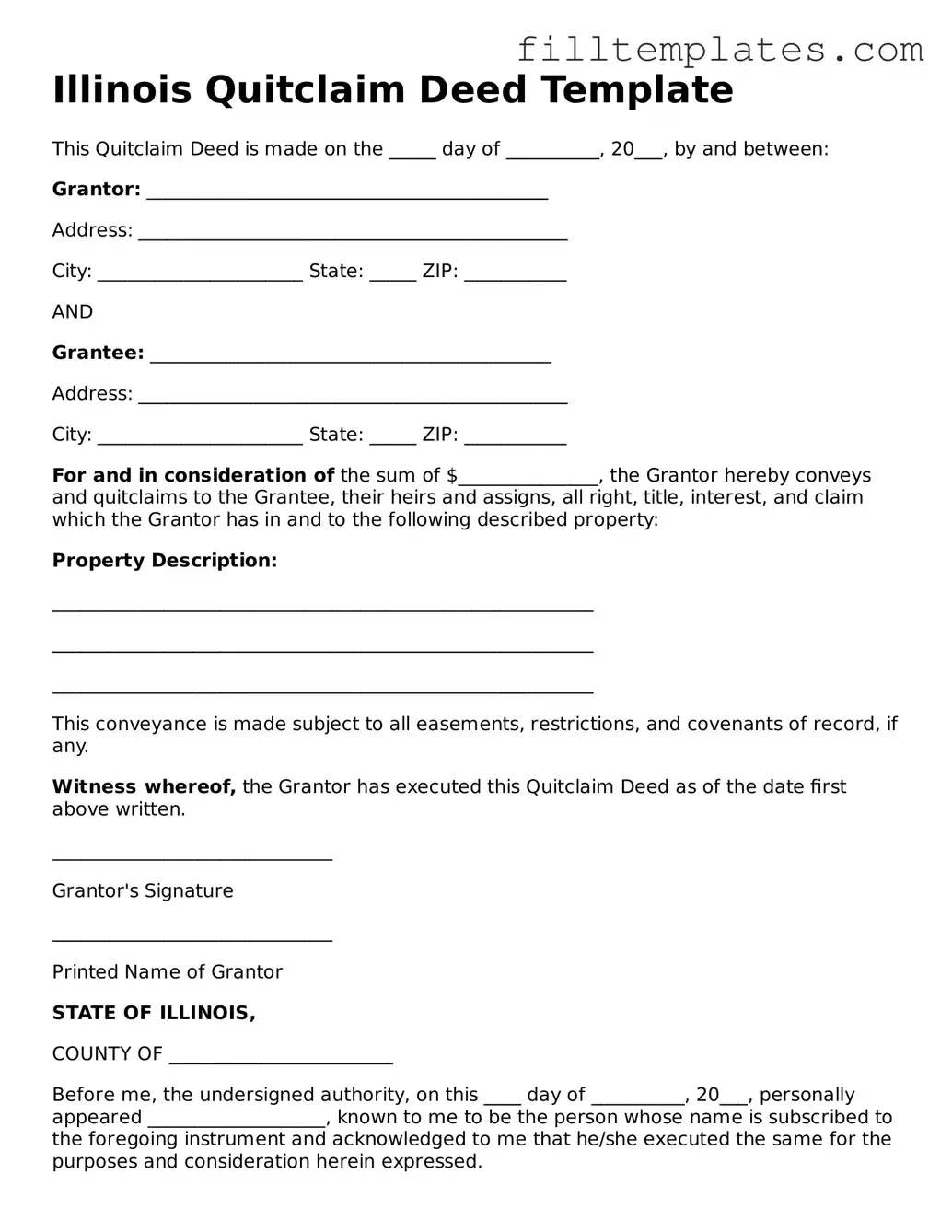Illinois Quitclaim Deed Template
This Quitclaim Deed is made on the _____ day of __________, 20___, by and between:
Grantor: ___________________________________________
Address: ______________________________________________
City: ______________________ State: _____ ZIP: ___________
AND
Grantee: ___________________________________________
Address: ______________________________________________
City: ______________________ State: _____ ZIP: ___________
For and in consideration of the sum of $_______________, the Grantor hereby conveys and quitclaims to the Grantee, their heirs and assigns, all right, title, interest, and claim which the Grantor has in and to the following described property:
Property Description:
__________________________________________________________
__________________________________________________________
__________________________________________________________
This conveyance is made subject to all easements, restrictions, and covenants of record, if any.
Witness whereof, the Grantor has executed this Quitclaim Deed as of the date first above written.
______________________________
Grantor's Signature
______________________________
Printed Name of Grantor
STATE OF ILLINOIS,
COUNTY OF ________________________
Before me, the undersigned authority, on this ____ day of __________, 20___, personally appeared ___________________, known to me to be the person whose name is subscribed to the foregoing instrument and acknowledged to me that he/she executed the same for the purposes and consideration herein expressed.
----------------------------------------
Notary Public
My Commission Expires: ____________
